(!)NOTE : Windows 7 users won’t be able to use some latest features of eCatalog/WOS since Microsoft is ending support for Windows 7 on 14 Jan, 2020. Please upgrade your system for uninterrupted services.
- Notice of End of Sales for Economy Series Pneumatic Equipment Category. More information.
Solenoid Valves(Number of Ports:4-Port Valve)
Brand |
|
|---|---|
| CAD |
|
| Days to Ship |
|
1 items
- Sort By
-
You can add up to 6 items per a category to the compare list.
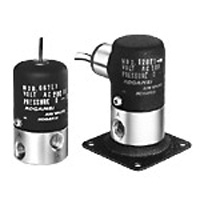
KOGANEI
Compact, lightweight, no sticking, mounting posture free, no need for additional oil, withstands high frequency operation, long service life. Many types of voltage, common to each model.
Note: CAD data of this series is being revised. Please wait till the corrections are done.Number of Ports Application Switching Type Voltage Number of Solenoids Mounting Orientation Pipe Port Type Specifications Status at Power Off Plumbing Thread Nominal Plumbing Applicable Cylinder Dia.(Ø) Type Driving Type Connecting Tube Diameter Pressure Rating(MPa) Seal Type CV Value Pilot Air Supply 4-Port Valve Single Use - - Single / Double Direct Rc (R) Standard / Lubrication Free Self-Retaining / Self-Recovery (Spring Return) 1/4 ~ 3/8 Direct Plumbing - Solenoid Valves Linear Motion Poppet / Pilot Type Poppet - - Soft Seal 0.08 ~ 0.76 Internal From: ₹ 10,584.36 Days to Ship: 5 Day(s) or more  5 Day(s) or more
5 Day(s) or more
| Brand |
|---|
| Product Series |
| CAD |
| From |
| Days to Ship |
| Number of Ports |
| Application |
| Switching Type |
| Voltage |
| Number of Solenoids |
| Mounting Orientation |
| Pipe Port Type |
| Specifications |
| Status at Power Off |
| Plumbing Thread Nominal |
| Plumbing |
| Applicable Cylinder Dia.(Ø) |
| Type |
| Driving Type |
| Connecting Tube Diameter |
| Pressure Rating(MPa) |
| Seal Type |
| CV Value |
| Pilot Air Supply |
You can add up to 6 items per a category to the compare list. | |
| Brand | KOGANEI |
| Product Series | |
| CAD |
|
| From | ₹ 10,584.36 |
| Days to Ship | 5 Day(s) or more |
| Number of Ports | 4-Port Valve |
| Application | Single Use |
| Switching Type | - |
| Voltage | - |
| Number of Solenoids | Single / Double |
| Mounting Orientation | Direct |
| Pipe Port Type | Rc (R) |
| Specifications | Standard / Lubrication Free |
| Status at Power Off | Self-Retaining / Self-Recovery (Spring Return) |
| Plumbing Thread Nominal | 1/4 ~ 3/8 |
| Plumbing | Direct Plumbing |
| Applicable Cylinder Dia.(Ø) | - |
| Type | Solenoid Valves |
| Driving Type | Linear Motion Poppet / Pilot Type Poppet |
| Connecting Tube Diameter | - |
| Pressure Rating(MPa) | - |
| Seal Type | Soft Seal |
| CV Value | 0.08 ~ 0.76 |
| Pilot Air Supply | Internal |
Loading...
Configure
Specification/Dimensions
-
Number of Ports
-
Application
- Single Use
- Manifolds
- Unit for Manifold Mounting
-
Switching Type
-
Voltage
-
Number of Solenoids
- Single
- Double
-
Mounting Orientation
-
Pipe Port Type
-
Specifications
- Standard
- High Frequency
- Explosion Proof
- Drip-Proof
- Ozone Compatible
- Lubrication Free
- No Copper, fluoropolymer Type Material
- Low Current
-
Status at Power Off
- Self-Retaining
- Self-Recovery (Spring Return)
- Self-Recovery (Pressure Differential Return)
-
Plumbing Thread Nominal
-
Plumbing
-
Applicable Cylinder Dia.(Ø)
-
Type
-
Driving Type
-
Connecting Tube Diameter
-
Pressure Rating(MPa)
-
Seal Type
-
CV Value
-
Pilot Air Supply
Related Categories to Solenoid Valves
FAQ Solenoid Valves
- Question: How do solenoid valves work? How does a solenoid valve control flow?
- Answer: Solenoid valves are electromechanical devices used to control the flow of fluids or gases in a system. They work based on the principle of electromagnetism. The valve consists of a coil (solenoid) and a plunger inside it.
When an electric current passes through the coil, it creates a magnetic field, which attracts the plunger to move. This movement of the plunger opens or closes the valve's passage, allowing or blocking the flow of fluid or gas through the valve.
By controlling the electric current to the coil, we can control the position of the plunger and, consequently, regulate the flow of the fluid or gas passing through the valve. - Question: What are the different types of solenoid valves?
- Answer: There are several types of solenoid valves based on their design and applications. The main types include:
2-way solenoid valves: These have one inlet and one outlet and are used to start or stop the flow of fluid or gas.
3-way solenoid valves: These have one inlet and two outlets (or vice versa). They can divert the flow between two different paths or mix two different fluids.
4-way solenoid valves: These have two inlets and two outlets and are commonly used in applications like directional control of pneumatic cylinders.
Direct-acting solenoid valves: These valves use the force of the solenoid to directly open and close the valve.
Pilot-operated solenoid valves: These use a smaller solenoid to control the flow of a larger valve, allowing them to handle higher pressures and flow rates. - Question: What are the applications of solenoid valves?
- Answer: Solenoid valves are used in various applications across industries due to their ability to control fluid and gas flow efficiently. Some common applications include:
Controlling water flow in irrigation systems and plumbing fixtures.
Regulating air and gas flow in pneumatic systems and HVAC systems.
Automation and control of industrial processes in factory automation.
Medical equipment, such as in blood analyzers and dental instruments.
Dispensing and vending machines for liquids and gases.
Automotive applications, like fuel and air control in engines. - Question: How to select the right solenoid valve for my application?
- Answer: To select the right solenoid valve for your application, consider the following factors:
Valve Type: Choose the appropriate valve type (2-way, 3-way, etc.) based on your flow control requirements.
Fluid or Gas Compatibility: Ensure the solenoid valve is compatible with the fluid or gas used in your system.
Flow Rate and Pressure: Determine the required flow rate and operating pressure to select a valve that can handle the expected conditions.
Voltage and Power: Check the voltage and power supply available in your system to match it with the solenoid valve's requirements.
Environmental Conditions: Consider factors like temperature, humidity, and surrounding conditions to ensure the valve can withstand the environment.
Response Time: Evaluate the response time needed for your application, as it impacts the speed of valve operation.


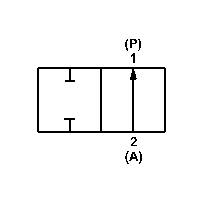

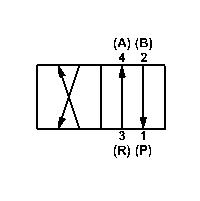
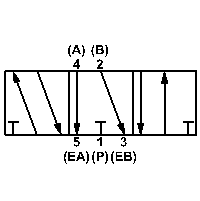




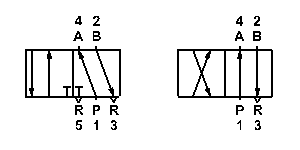
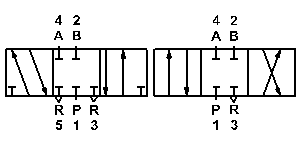
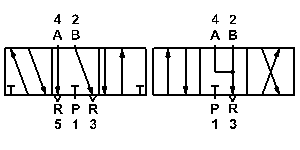


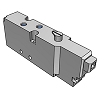




How can we improve?
How can we improve?
Thank you for your time.
Your feedback is essential for our continuous improvement
Privacy Policy
Thank you for your cooperation.
Thank you for your time.
Your feedback is essential for our continuous improvement
Please use the inquiry form.
Privacy Policy